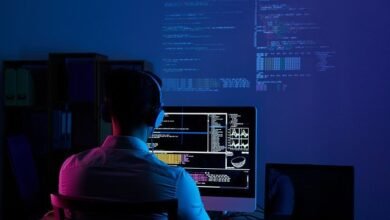What is a computer virus

What is a computer virus
Are you interested in knowing what a computer virus is? Everyone knows how to use a computer and those who use a computer must have heard the name of the virus.
Virus (Virus in Hindi), this name is a very familiar name in the internet world. Besides this, it is also a very scary name because it is very harmful to your computer and other electronic gadgets. This means that if it enters the system once, it can also corrupt it and can also destroy your data as well.
Just as viruses are not good for our health, they spread many diseases in our body, in the same way these viruses also cause many damages in the computer system. Therefore, it is good for all computer users to have information about it.
Many people will also know something about a computer virus, what it is and what it does. But there are many people who must have heard the name of the virus but will not know what the virus can do to your computer.
Therefore, today in this article I will tell you about what the virus is and how to eliminate it. I hope you will learn a lot by reading this article.
What is a computer virus
Computer Virus is a small program designed to destroy or damage your computer’s operation and computer data.
A computer virus without our knowledge can corrupt the system in a way that we cannot fix. The computer works through many programs only, and without any program the computer cannot function.
Programs are made to make the computer work properly, and some programs are made to corrupt the computer.
Man invented the computer, man made his program to run the computer, and as I said, virus is also a small program, man made it too. Computer viruses are not natural, they are not made by themselves, they are also created by programmers on purpose so that they can corrupt other computers.
Or we can also say that viruses are actually destructive rather than productive computer programs. Its primary purpose is to do harm rather than provide assistance.
History of computer viruses
Robert Thomas, was the first engineer who developed the first computer virus in 1971 while working at BBN Technologies .
This first virus was called the ” Creeper ” virus , and it was an experimental program that Thomas G himself made to infect the main ARPANET computers. After this virus system was infected, it was used to display the following message on the screen, ” I’m a crawler: Catch me if you can .”
The original wild computer virus that was tracked down for the first time in the entire history of a computer virus was ” Elk Cloner “. Elk Cloner previously infected Apple II operating systems through floppy disks. Richard Skrinta developed this virus in 1982 , when he was a teenager.
Suppose computer viruses are designed according to a joke, but it is known that if a malicious program is installed in the memory of the computer, it can do many things that can prevent the user from booting the system. They can also stop further and will not have the slightest control over these malicious programs. And
The first person to call this malware ” Computer Virus” was Fred Cohen , who launched it in 1983. This name came to the fore when he gave these programs a name in one of his academic papers entitled “ Computer Viruses – Theory and Experiments ” where he wrote complete information about these malicious programs such as how they work, what they can do, etc.
What can computer viruses do?
A computer virus can damage or delete the data on the computer. You can completely get rid of the data stored on your hard disk. Computer viruses corrupt their computers by spreading to other computers through email attachments.
The virus slows down the speed of your computer. It destroys your files and programs.
Malware – What is Malware
The full name of the malware is malware . This is also software that harms computers. Malware means bad software that is not good at all and once it appears in your system, it can corrupt your system completely.
Malware is also the name of a virus that slowly starts to destroy your system data.
Where does the malware come from in our computer? Malware can come from many places in our system and the most used source today is the Internet.
On the Internet, we get some information every day. If we go to any malicious site to get the same information or download pirated software, games and movies from anywhere, from there the malware comes online in our computer.
This was about how online malware gets into our computer, now we will know how offline malware gets into our computer.
We all use Pendrive, CDs, and DVDs in our computers. When we connect Pendrive and CD to our computer to get data from other places, malware comes to our computer from all these things and our computer destroys the data.
Types of Malware
There are three types of malware – viruses, worms, and Trojan horses . These three are different, and their work is different, too. These three harm your computer in different ways. Let’s know about these three, what they do.
What is the virus
Viruses can damage files and programs on your computer. Suppose you have a Word document in your system that the virus came in, it will delete the data of your document or it will corrupt that document so that you cannot get any information from it.
Or it may also happen that this virus can completely corrupt your word processing software. In such a case, if you copy or share any corrupted file, this virus will move to another computer and corrupt its system.
virus type
A computer virus is a type of malware that, if it gets into your computer’s memory, can automatically multiply itself and can also change programs and applications.
Computers here get infected when these malicious codes keep repeating themselves. Here I will provide you with information about these types of computer viruses .
boot sector virus
This type of virus infects the master boot record and is difficult to remove and often the system is coordinated to remove it. It is mainly deployed through removable media.
direct action virus
These viruses are also called non-resident viruses, and once installed, they remain hidden in the computer’s memory. It remains associated with certain types of files it infects. It does not affect the user experience and system performance.
resident virus
Like direct action viruses, computer-residing viruses are also installed. Apart from this, identifying them is an equally difficult task.
multipart virus
This type of virus can affect the system in several ways. Both infect the boot sector and executable files together.
polymorphic virus
Identifying this type of virus is very difficult for a traditional antivirus, because these viruses frequently change their signature pattern as they replicate themselves.
overwrite virus
This type of virus deletes all the files it infects. To remove these viruses from the system, the user must delete all the infected files causing data loss.
It is very difficult to identify these viruses because they spread through emails.
Spacefiller Virus – These are also called “spacefiller viruses”. They called them that because it fills all spaces in the code, so it doesn’t harm the files.
File Viruses
Some file slanderers come bundled with program files, such as .com or .exe files. Some file contagious viruses also infect files that contain .sys, .ovl, .prg, and .mnu.
In the same way, when a certain program is also loaded, the virus is also loaded automatically. These viruses come to users’ computers with e-mail.
macro viruses
As the name suggests, macro viruses mainly target macro language commands as in some applications such as Microsoft Word.
These macro viruses are designed in such a way that they easily add malicious code to the original macro sequences.
overwrite viruses
This virus is designed in such a way that it can overwrite itself and destroy any file or application data. Once the attack starts, it starts overwriting its own code.
Viruses are polymorphic
This type of virus is used by more and more cybercriminals. This is a type of malware that can easily change or mutate its core code and without changing any core functionality or features.
With this said, it does not even fall under any of the anti-malware programs. When an anti-malware program detects this, it modifies itself, making it very difficult to detect.
resident viruses
This virus implants itself in the computer’s memory. Basically, there is no need for the original virus software to infect any files or programs. Even if you delete the original virus, a copy of it is stored in memory, which is automatically activated.
This happens when the computer’s operating system loads some applications or functions. Since it is hidden in the system RAM, it is often unable to detect any antivirus or antimalware software.
rootkit viruses
This rootkit virus is a type of malware that secretly installs an illegal rootkit into an infected system. This opens the door for the attackers, who give them complete control of the system.
With this, attackers can easily modify or disable basically any program or functionality. These rootkits can easily bypass antivirus software. A Rootkit Scanner is required to capture them.
System Boot-Record Infectors Viruses
These boot record vectors infect executable code located in certain system areas of the disk. As the name suggests, they infect most in USB flash drives and DOS boot sector.
These boot viruses are not seen much nowadays because current systems do not rely on a lot of physical storage media.
What are worms?
Worms are similar to viruses, too, but they reproduce and try to spread themselves as much as possible. Which means that if worms get into your system, they start making many copies of different files, which slows down the system.
If we copy the same files and share them with another computer, the worms will slow down that computer by going there as well by making many copies of the files.
What is a Trojan horse
Trojan horse is a very dangerous malware. This malware comes into your computer by hiding your identity.
For example, let’s say you are using the internet and you visit any site, there you see add like “ Click here to win a smartphone ” and you click on it, then the Trojan malware will just get into your computer through it. And you won’t even know about it and it will completely mess up your system.
These are also present on the Internet in the form of many programs, you will feel that they are genuine software but in fact it is a Trojan horse that is still hidden inside this program and once it reaches your computer, it will be your computer. slowing down. Besides, it will open a door through which other types of viruses and worms will enter your computer.
Signs of virus infection in the system
How do you know if your system is infected with a virus or not. That is why I am going to tell here about some warning signs which are very important for all computer users to know –
If such warnings appear in your system, you should know that your system could be infected with the virus. So quickly download and check a good antivirus .
How to protect your system from viruses and worms
Here I will give you some tips that will make it easier for you to avoid these viruses.
What to do
1. Always install a good antivirus in your system and keep it up to date from time to time.
2. If you do not have any information about its sender, you should not open it.
3. Do not download anything from unauthorized websites such as MP3, movies, software, etc.
4. Get all your downloaded stuff accurately scanned. Because they have a higher chance of contracting the virus.
5. Use removable media like pendrive, disks only after erasing.
6. If you visit any website, you should keep in mind one thing that it is a popular and registered website and do not click on any such link, which may cause you trouble later on.
What not to do
1. Never open any email attachment , if you do not have information about that sender.
2. Do not try to open any unwanted executable files, documents or spreadsheets without scanning them.
3. Do not download documents or executable programs from untrusted websites.
4. Ads that entice you to click here and win the lottery, then never click on these addons. Similar greed comes to us in emails too, so never open that mail because the chances of malware in it are higher.
What is the full form of the virus?
The full form of VIRUS is bioinformatics sources under seizure. The complete form of virus in Hindi is the smaller Vital Information Resources.
How is the virus found?
A virus has been detected using an antivirus program.
What did you learn today
I hope you liked my article What is a Computer Virus – What is a Computer Virus. I have always been trying to provide complete information about the type of virus to my readers, so that they do not have to search any other sites or on the Internet in the context of that article.
This will also save their time and they will also have all the information in one place. If you have any doubts about this article or if you want there to be some improvement in it, you can write low comments on it.
If you liked this post what is computer virus or learned something, please share this post on social networks like Facebook, Twitter and other social media sites.



